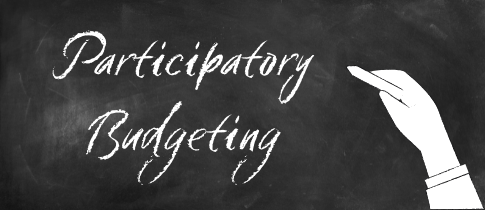Participation
Participatory Budgeting (PB) in Scottish education
January 24, 2022 by Jen Swan No Comments | Category Democracy, Our work
For those new to participatory budgeting (PB), it is a democratic process in which citizens decide directly how to spend part of a public budget.
Simply put, PB is a way for people to directly vote on how local money should be spent.
PB comes in all shapes and sizes, but typically involves:
- the generation of ideas (or proposals) about how a budget should be spent
- people (usually within a community of place or interest) then vote to priorities these ideas
- the projects with the most votes get funding
Participatory budgeting in education
To mark international day of education we wanted to highlight some of the benefits to PB in education and showcase some recent examples, as well as sharing some helpful resources.
Benefits to PB in education
Participatory budgeting can be a powerful way for children and young people to have their say on decisions that affect them.
Introducing PB processes within an education setting can help contribute to:
- building more confident and active young citizens
- raising attainment across the whole school
- strengthening school culture
- lowing the cost of the school day
You can find out more about the benefits to introducing PB in schools by visiting PB Scotland’s 60 second guide on participatory budgeting for schools
Recent examples of PB in schools:
- School PB: South Lanarkshire school runs PB process — PB Scotland
- St Luke’s ‘cost of the school day’ project — PB Scotland
Framework for the future of PB in Scotland: from an education perspective
The National Participatory Budgeting Strategic Group has published a framework for the future of participatory budgeting (PB) in Scotland. The framework sets out shared intentions and ambitions for PB and outlines a series of priority recommendations to be carried forward.
This strategic framework is a key document that underlines how we can evolve PB into a central way for decisions to be made in Scotland.
PB in schools and education is included in this framework:
Priority 12: PB across education
“We support high quality PB processes in education where everyone can contribute equally in setting the agenda and making decisions, and where PB supports a policy or budget that is locally identified as important.”
“We encourage a focus on developing PB further in secondary schools, building on good participatory practice in primary schools. Encouraging PB activity in areas identified together by pupils, parents, school staff, education authorities and partners.”
Priority 14: PB addressing the attainment gap
“We advocate for the ongoing development of PB as a tool to address challenges of poverty and inequality experienced by children by supporting the Pupil Equity Fund and Scottish Attainment Challenge.”
The national PB Strategic Group was established by the Scottish Government to provide strategic direction for PB in Scotland, particularly in light of the challenges of the covid-19 pandemic and the opportunities to ‘build back better’ as part of the recovery. The Group is independently Chaired by Dr. Martin Johnstone and secretariat support is provided by the Scottish Government.
Find out more
- Scottish Government – Participatory Budgeting Policy
- Education Scotland guidance
- Youth-led Participatory Budgeting blog by Democratic Society
- Join the PB Scotland network
We plan to blog more about PB and all things Participation in the future, you can subscribe to this blog to receive notifications or follow @scotgovengage on twitter
Tags: community empowerment, community engagement, education, Engagement, participation, participatory budgeting, PB


Leave a comment